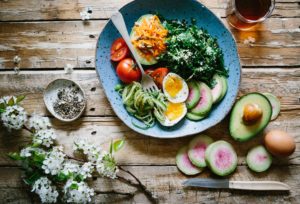
What We Eat
After over a decade on a whole-foods, plant-based diet – with long-term forays into oil-free as well – we started to take stock and make some changes.
We are what we eat. What we buy (how its grown). What we cook (or don’t). What we waste. We explore it all in this perspective on all things food.
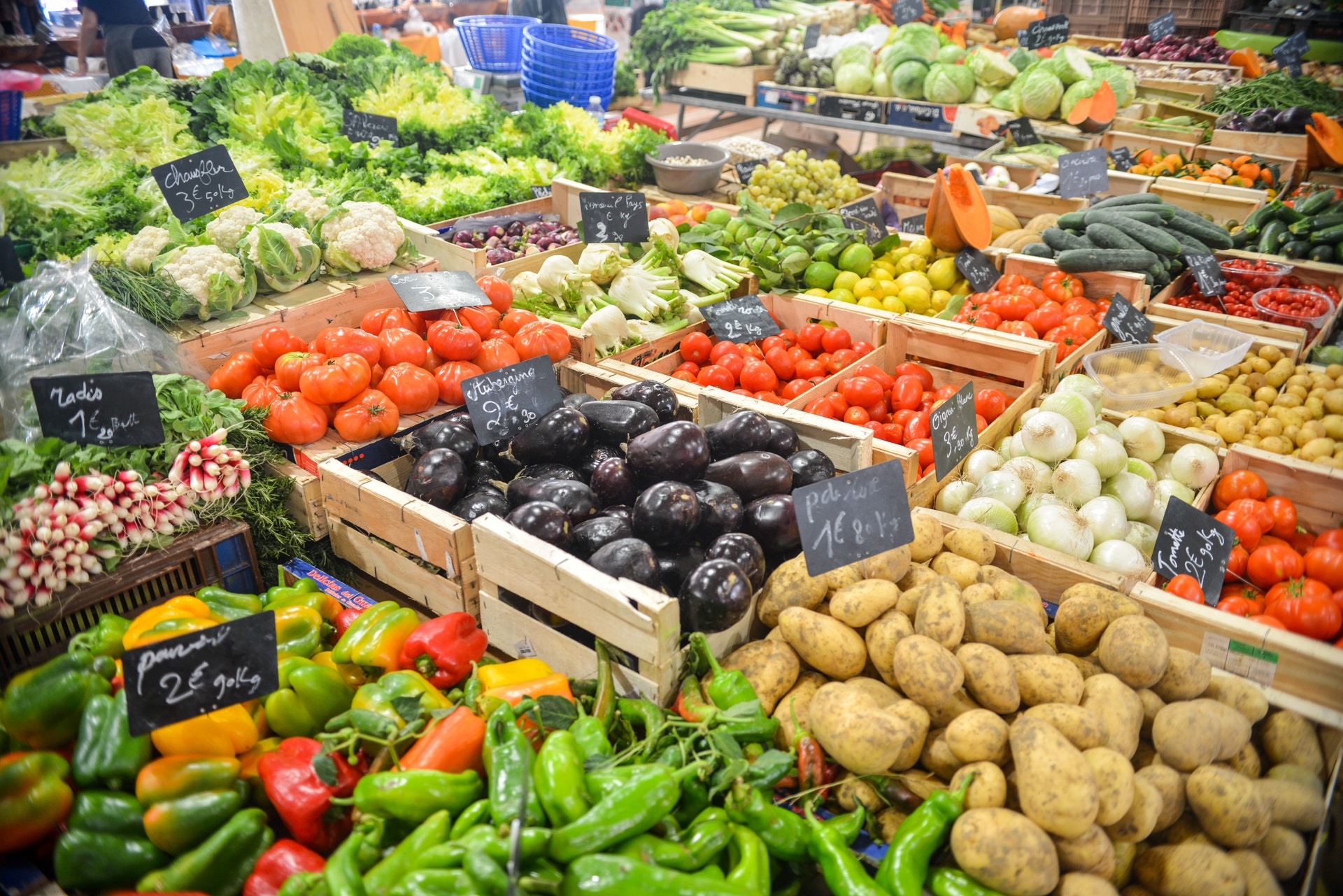
There is no single diet that is perfect for everyone. But we do know that “mostly plants” is key. Here are eight well-known, phyto-rich diets (in no particular order) that are all built around a plate that is at least two-thirds vegetables. Click on each to learn more. I am knowledgable about each and comfortable coaching my clients in any of these approaches.
“Eat Real Food. Mostly Plants. Not Too Much.” – Michael Pollan
A whole-food, plant-based diet consists of “whole foods” which means natural foods that are not heavily processed. These are whole, unrefined, or minimally refined ingredients. The “plant-based” part means only foods that come from plants and does not include any animal ingredients: meat, seafood, milk, eggs, or honey. Of late, many proponents now exclude all oil as well – considering it “highly processed” although some are not.
Vegan
Veganism is more than a diet, it is also a philosophy and lifestyle. Here is the Vegan Society’s definition: It is a “way of living which seeks to exclude—as far as is possible and practicable—all forms of exploitation of, and cruelty to, animals for food, clothing or any other purpose; and by extension, promotes the development and use of animal-free alternatives for the benefit of animals, humans and the environment. In dietary terms it denotes the practice of dispensing with all products derived wholly or partly from animals.” A vegan diet excludes meat, poultry, fish, eggs and dairy products — and foods that contain these products. (note: It is possible for a vegan diet to be unhealthy since it does not eschew refined and processed foods.)
Vegetarian
Vegetarianism is the practice of abstaining from the consumption of meat, which may also include by-products of animal slaughter. Vegetarianism may be adopted for various health, moral or lifestyle reasons, including, the objection to eating meat out of respect for sentient life. There are three sub-types:
There are several variations on this theme of plants plus fish.
In most cases, the wild-caught fish are preferably chosen from the EWG’s SMASH (Salmon, Mackerel/Mussels, Anchovy, Sardines, Herring) list of fish. These are generally wild-caught, low in mercury and high in omega-3s and sustainable. Cultivated Mussels and Brook Trout are exceptions. See their website – ewg.org – for more descriptions and second-tier of acceptable seafood as well.
Mediterranean
The foundational elements of the Mediterranean diet are also plant-based: vegetables, fruits, herbs, nuts, beans, whole grains and extra virgin olive oil. In addition, moderate amounts of fish and seafood are eaten at least twice a week and poultry, eggs, cheese and yogurt about once a week. Red meat and sweets are eaten only occasionally.
Diabetes Prevention (CDC DPP)
There is, or soon will be, an optional track for the CDC’s Diabetes Prevention Program that is a plant-strong diet. The expectation is that participants will gradually adopt something akin to the WFPB diet over the year-long life-style program (that includes many other facets as well.) A WFPB diet has been shown to significantly reduce diabetes and to even more significantly reduce the markers that predict the condition.
MIND
MIND stands for Mediterranean + Intervention for Neurodegenerative Delay. It was developed by Dr. Martha Clare Morris, then director of the Rush Institute for Healthy Aging, to prevent cognitive decline. It combines and modifies two popular diets: DASH “Dietary Approaches to Stop Hypertension” (high blood pressure) and Mediterranean. Her ten-year, thousand-person study showed that the top third of adherents reduced their risk of developing Alzheimer’s by 53%!
KetoFLEX 12/3
KetoFLEX is a plant-forward, very moderate ketogenic diet designed to optimize cognition. It was developed to support the Bredesen protocols (PreCODE and ReCODE) to prevent or to reverse/arrest cognitive decline particularly Alzheimer’s disease. “Keto” stands for Ketosis – the process by which your body breaks down its own fat to use for fuel. “FLEX” describes both metabolic flexibility (the ability to use either glucose or fat as a fuel source) as well as the flexitarian diet, in which animal protein is either optional or a condiment. 12/3 refers to the minimum amount of fasting time each day – at least 12 hours – between dinner and breakfast and the minimum of 3 fasting hours between dinner and bed. The KetoFLEX diet is also grain-free and minimizes the inclusion of starchy root vegetables.

After over a decade on a whole-foods, plant-based diet – with long-term forays into oil-free as well – we started to take stock and make some changes.
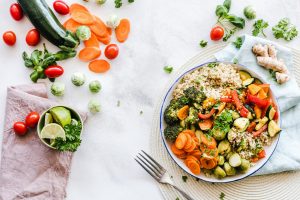
It seems to us that the fewer animal products one eats and the more organic produce one consumes, the better off everyone is.

We fly a lot – and we’ve learned that even in the chaos of last minute packing, it’s critical to take the time to prep a food carry on.

I love the sentiments and attitude in this book! After more than a decade on a relatively strict “whole food, plant-based” diet, we started a
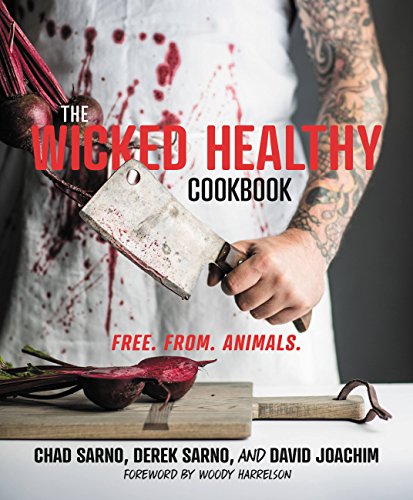
I love this book!!! From the minute it arrived, I was lost. Just skimming the essays, lists, Pro Tips and stunning recipes and images took
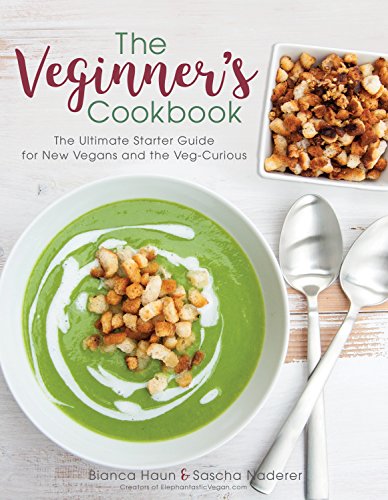
My first reaction to this beautifully photographed, inviting tome was “What a great name! How come no one else thought it?” And it is actually
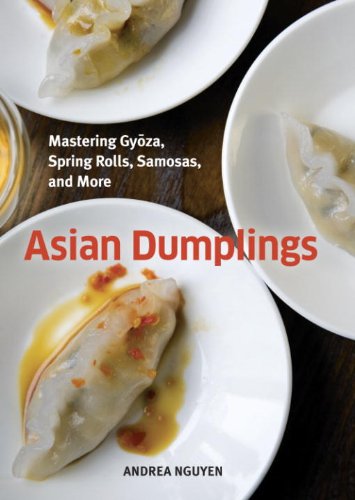
This was my first Andrea Nguyen book; it’s a large hard-bound book with lots of enticing color photos and diagrams.